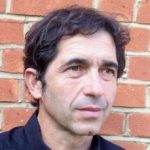Higher education institutions (HEIs) are increasingly engaged in the urgent and important work involved in the global transition towards sustainable development. They are potentially well suited to address key challenges, being as they are knowledge and talent ‘factories’. Beyond their educational mission, HEIs are particularly well placed to convene other actors as well as enable the conscious collision of disciplines in pursuit of solutions. However, academic programs that ostensibly focus on sustainability are in fact too narrow in scope and can stand isolated. The academic custom disciplinary and organizational silos can also exacerbate the intellectual and structural difficulties to fuller immersion in sustainability by the academy. Using a case-study approach, we examine an academic innovation (Master’s Program in Strategies and Technologies for Development), and a structural innovation (Innovation and Technology for Development Centre, itdUPM), two discrete change agency initiatives at Universidad Politécnica de Madrid. Going on to explore the interactions between the Master’s and itdUPM, the case identifies how the latter structural innovation as a supporting structure enables the development of transformational sustainability at the university-level, generating long-term societal impacts through a transformative learning. Our findings suggest that pan-institutional interdisciplinary sustainability-oriented programs may serve as a powerful lever for HEIs to contribute to sustainability challenges, representing vehicles for effecting change within an institutional context. Nevertheless, academic innovation is considered a necessary condition, but is not sufficient alone. The case shows that the innovation processes must go beyond the borders of educational programs to promote changes in the internal structure of universities and new multi-stakeholder ecosystems. They may furnish learning and research opportunities for students and staff, and income generating activities for universities. However, to keep this “virtuous loop” active at HEIs, innovative intermediate structures such as itdUPM are required to cultivate trust capital and foster value creation.
AUTHORS
|
|
|
|
|
|



